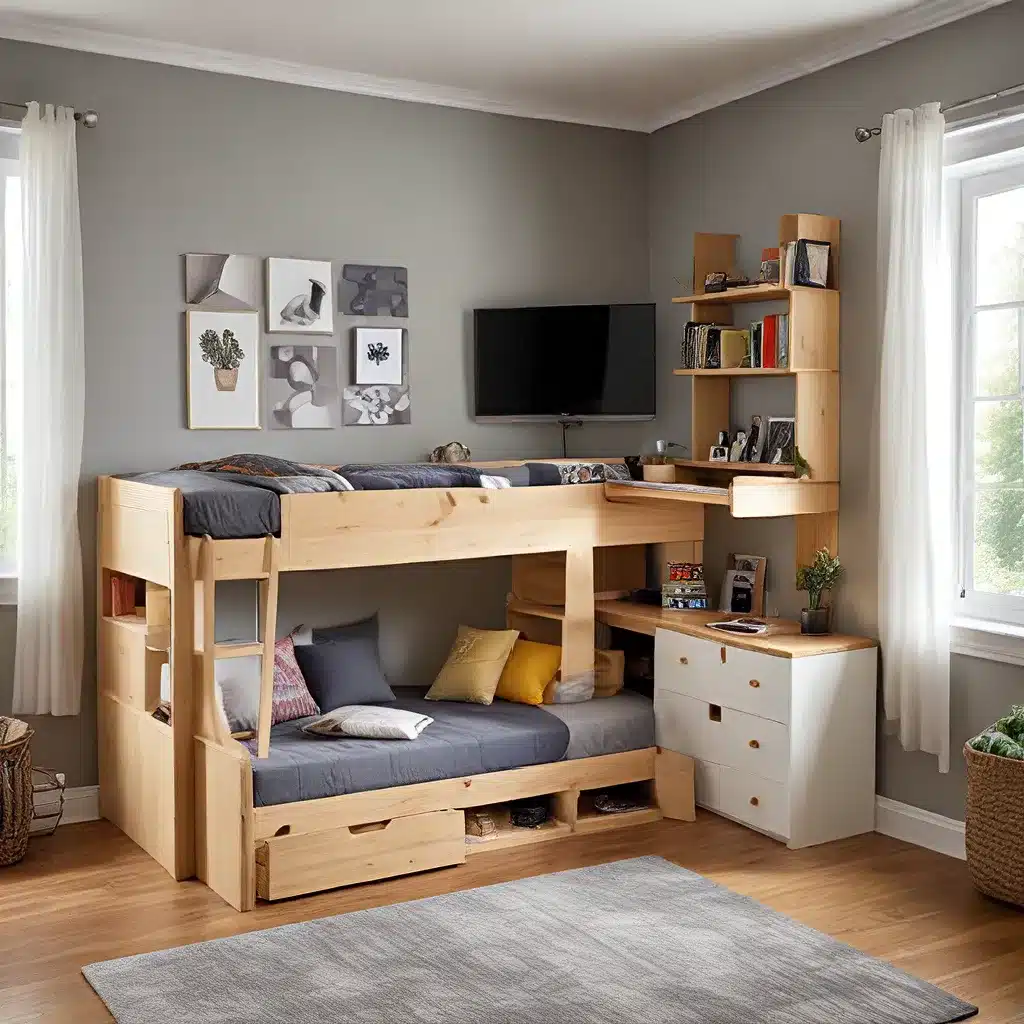
In the ever-evolving landscape of interior design, multifunctionality has emerged as a guiding principle that seamlessly blends practicality with style. As the demand for versatile living spaces continues to rise, designers have been tasked with exploring innovative solutions that cater to the diverse needs of modern lifestyles.
Practical Integration: Maximizing Space Utilization
At the heart of practical integration lies the art of maximizing space utilization. Multifunctional design aims to make every inch count, transforming even the smallest nooks into purposeful elements. From hidden storage solutions within furniture to utilizing vertical spaces, the goal is to optimize the available space efficiently.
Convertible furniture is a vital practical solution, offering ingenious ways to maximize space without compromising on style or functionality. Pieces that serve dual or multiple functions, such as sofa beds, foldable tables, or ottomans with hidden storage, allow for quick transformations and adaptability to changing needs.
Strategic spatial planning also plays a crucial role in multifunctional design. Placing furniture and design elements with purpose ensures a flow that maximizes functionality, considering factors like ease of movement, accessibility, and the creation of distinct zones within a space.
Stylish Aesthetics: Elevating Spaces with Design
While practical solutions are paramount, the stylish aesthetics in multifunctional design elevate spaces from mere functionality to visually captivating environments. It involves artfully integrating design elements that serve practical purposes and contribute to a space’s overall beauty and appeal.
Stylish aesthetics in multifunctional design embrace a cohesive design language, where the thoughtful coordination of colors, materials, and design motifs throughout a space creates a unified and visually pleasing environment. Remaining attuned to current design trends is a hallmark of this approach, ensuring that the space remains relevant and reflects a sense of modernity.
Incorporating stylish aesthetics also entails meticulous attention to detail. Every element, from the selection of furniture pieces to the arrangement of decor items, is carefully considered to enhance the overall visual appeal of the space. Thoughtful touches, such as carefully chosen accessories or accent pieces, contribute to the harmonious balance between form and function.
Multifunctional Marvels in Action: Transforming Living Spaces
The multifunctional design approach has a profound impact on various living spaces, redefining how we approach the design of our homes. Let’s explore how these versatile solutions elevate the functionality and style of living rooms, kitchens, and dining areas.
Living Rooms: Adaptable Sanctuaries
Living rooms, often the heart of a home, benefit immensely from multifunctional design solutions. Sofa beds epitomize this approach, serving as comfortable seating during the day and transforming effortlessly into a bed when needed. This flexibility is precious for accommodating guests without sacrificing space or style.
Modular seating arrangements provide further adaptability, allowing inhabitants to create various configurations to suit their needs. Pieces that can be rearranged or detached foster an ever-changing dynamic within the living room.
Ottomans with concealed storage compartments offer a dual purpose, serving as seating and a discreet storage solution for items like blankets, cushions, or magazines. This clever integration helps maintain a clutter-free appearance in the living room.
Kitchens and Dining Areas: Practical Elegance
Kitchens and dining areas, traditionally designated for specific purposes, have undergone a transformative shift in design philosophy. Modular kitchen designs with adaptable storage solutions, such as pull-out shelves, rotating corner units, and adjustable racks, maximize storage space and ensure every item has its designated place.
Incorporating foldable or expandable surfaces adds versatility to kitchen counters and dining tables, allowing them to be extended during meal preparation and folded when unused, providing additional space for various activities.
Convertible dining furniture is a critical component of multifunctional dining areas. Tables that can be expanded or transformed into different shapes accommodate everyday meals and larger gatherings seamlessly, adapting to diverse needs.
Integrated seating solutions, such as benches with hidden storage or stools that tuck neatly under the table, optimize space in dining areas while contributing to a clean and uncluttered aesthetic.
Small Spaces, Big Solutions: Multifunctionality in Compact Homes
In the era of urban living, where square footage is often limited, the principles of multifunctional design shine the brightest. Compact furniture and vertical storage solutions, coupled with intelligent spatial planning, become essential tools for maximizing small spaces.
Multifunctional furniture items, such as foldable desks and hidden storage units, allow even the smallest spaces to be practical and stylish. As sustainability takes center stage in design, these versatile solutions align with eco-conscious practices, incorporating sustainable materials and energy-efficient elements.
The Path to Multifunctional Mastery: The Role of Education
For those aspiring to master the art of multifunctional design, education plays a pivotal role. Relevant certified online interior design courses provide the foundation for understanding the principles of multifunctional design, including concepts such as space planning, furniture design for multifunctionality, and balancing practical needs with aesthetics.
By delving into the intricacies of multifunctional design through comprehensive interior design education, aspiring designers can unlock the potential of this transformative approach, contributing to the ongoing narrative of innovative and adaptable design in the ever-changing tapestry of interior spaces.
Multifunctional marvels in interior design exemplify the evolution of spaces to meet the demands of contemporary living. By seamlessly integrating practical solutions with stylish aesthetics, designers create environments that are not only versatile but also visually captivating. Whether in expansive homes or compact apartments, the principles of multifunctional design offer a blueprint for crafting spaces that adapt, evolve, and elevate the daily living experience.

